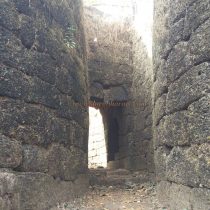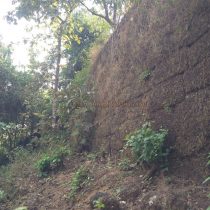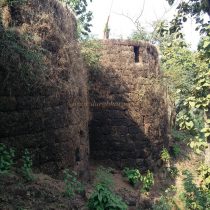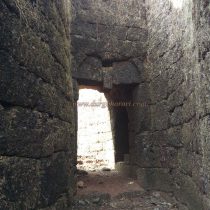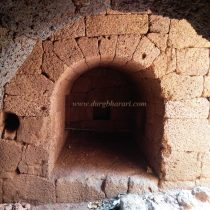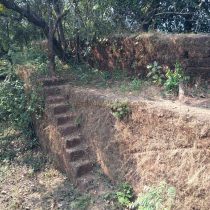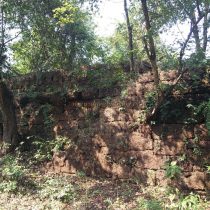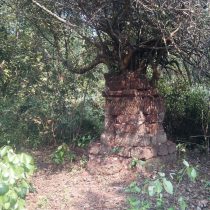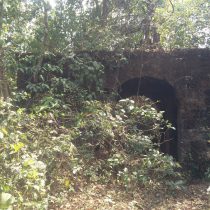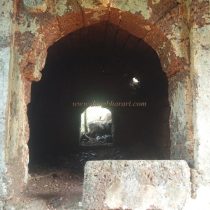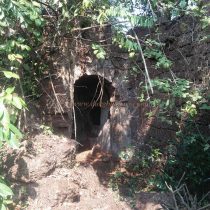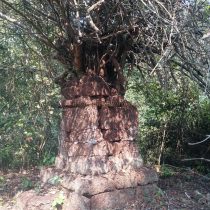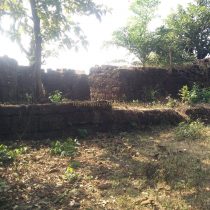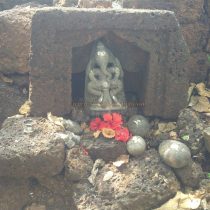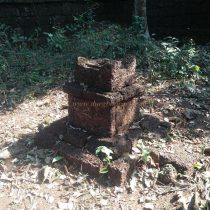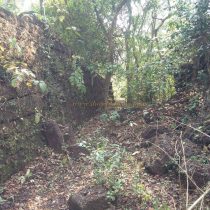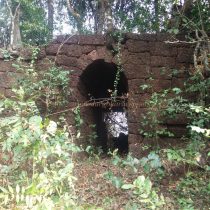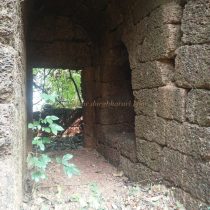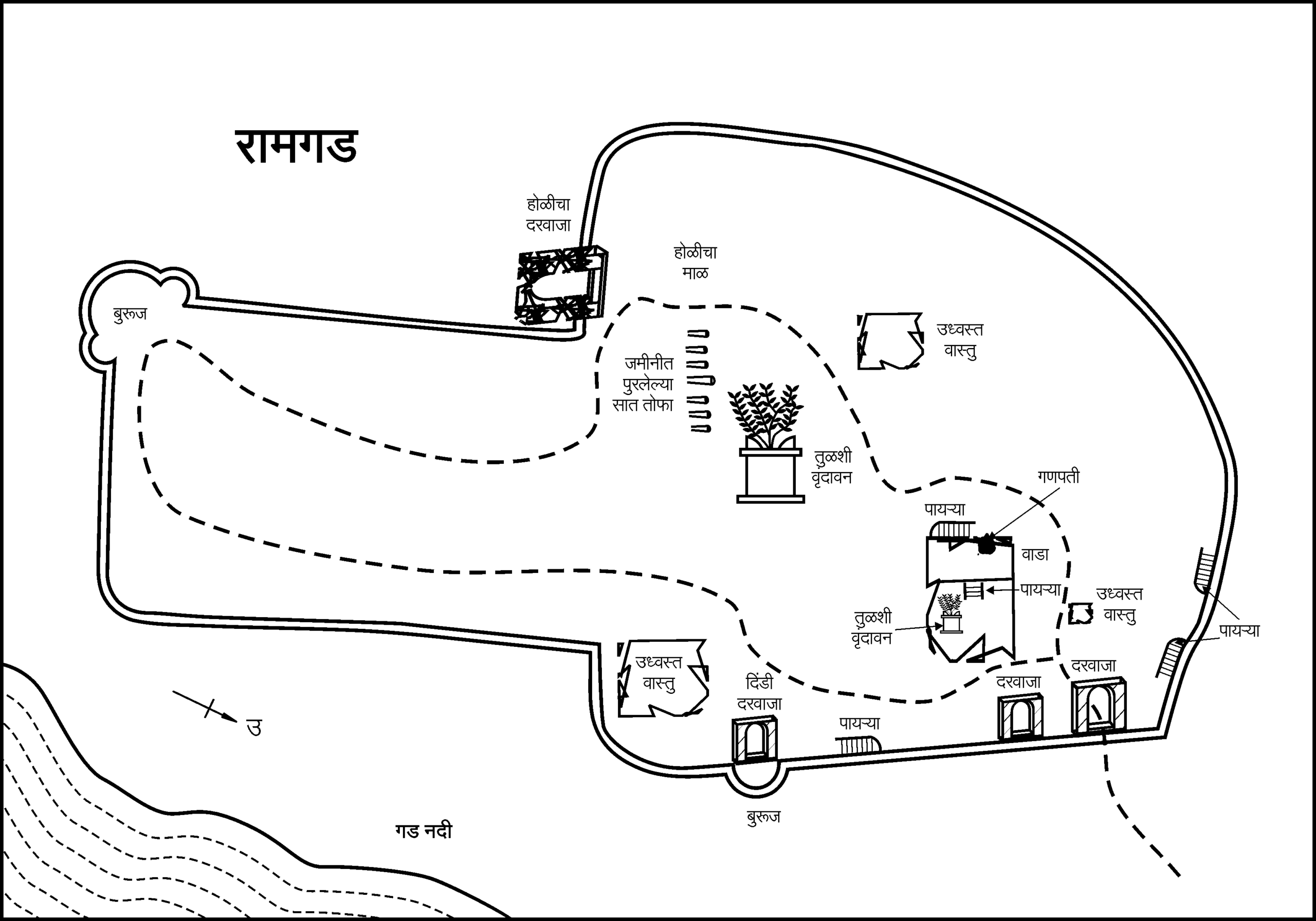RAMGAD
TYPE : COASTAL FORT
DISTRICT : SINDHUDURG
HEIGHT : 210 FEET
GRADE : EASY
The river Gad, which originates in the Sahyadri range, meets the sea near Sindhudurg fort. Small forts were built from the source to the confluence of this stream at different times. Bhairavgad-Songad forts were built near the source of this river, then Ramgad, Bharatgad, and Bhagwantgad on the banks of the river and Sarjekot at the confluence of this river. Except for the Sindhudurg fort, other forts in the area are not visited by anyone. Ramgad is an unfamiliar fort surrounded by thick bushes on a small hill 210 feet high at the beginning of the river Gad. Ramgad village is at the base of the fort and is used to reach Ramgad fort in Malvan tehsil of Sindhudurg district and Kankavli is the nearest town to this fort. The distance from Mumbai to Kankavali is 440 km and from here on Kankavali-Achara road you can reach the base of the fort within 12 km.
...
Most of the forts along the Konkan creek have the same structure as the main citadel on the hill and the extra ramparts leading directly to the creek. This type of structure can be seen in Gopalgad, Jaygad, Vijaygad, Yashwantgad, Ramgad, and Devgad forts. Ramgad fort is similarly divided into two parts. It is composed of a citadel on the hill and extra ramparts downwards to the creek. The fort, which is the private property of Prabhudesai in the village, is now neglected and is in the possession of nature. There is a large number of trees growing on the fort and you have to see the fort by making your way through these trees. There is a path near the post office in Ramgad village to reach the fort. On the way to the fort, there is Ravalnath temple on the left and Mallikarjun temple on the hill. The temple has carved idols and a Gajalakshmi sculpture, some ancient idols, and many hero stones can be seen on the premises of the temple. There is a footpath to cross the farm in front and reach the fort. This way in 10 minutes we reach the overhead water tank that supplies water to the village. Looking up from here, one can see the bastion of the fort. Turn left from the cistern and in 5 minutes you reach the north-facing gate of the fort. There are 5-6 steps in front of the door and there is not much space to stand near the door. This door is built between two bastions in such a way that it is not easily visible. The fort is constructed of stone and mixtures of lime or cement is not used to join the constructions. There is a stone in the arch of this 8 feet high door, which is in a state of collapse and if support is not given in time, the whole door will collapse. Inside the door are guard porches on both sides. Upon entering through the door, there are steps on the left side to go to the ramparts and the upper part of the door. When you reach the door through these steps, the whole fort looks full of trees. There are barrages and windows on the bastions as well as on the ramparts to fire cannons and guns. The ramparts of the fort are about 12 to 15 feet high and the width of the curtain wall is 4-5 feet. Stairs have been built in some places to climb the curtain wall. The entire fort can be reached from the curtain wall, but this is not possible due to the trees growing on it at present. The total area of the fort is about 7 acres, the head of the fort is spread over three acres and the part near Machi is spread over 4 acres. Passing through the door, a memorial quadrangle structure is seen on the hill on the left. Anthills have developed on this quadrangle and the steps below the quadrangle are buried in the soil. This is known as ‘Vetalache Thikan’. Going further from here, there is a large number of trees and bushes on the ramparts on the left, while the trees on the right are so dense that you cannot pass through them. Going forward, the path turns left. There is a huge bastion here and you can reach this bastion as the number of trees and bushes on it are sparse. The Gad River can be seen from this bastion. From here, on the left side of the road, you can see seven small cannons buried upside down in a line. The place of attaching fuse to this cannon has been closed by attaching iron nails. On the right side of the road is a large quadrangle structure hidden in the bushes and front of the cannons is a large Tulsi Vrindavan 7 feet high. This Tulsi Vrindavan should be a memorial. Like the Tulsi Vrindavan of Bhagwantgad, this Vrindavan now also has a large tree growing instead of Tulsi. If this huge tree is not removed in time, this Vrindavan will be destroyed. At a short distance from here is the north-facing gate of the fort built on the base of two bastions. Depending on the size of the gate and the construction of the gomukhi style, it may have been a major route to enter the fort, but now there are so many thorny trees on the road, that you can't even go down 8-10 feet. On either side of the door, there are porches for the guards and in one of the porches, there is a small door to come through the wall. The door has collapsed on a large scale and if someone doesn’t take care of it, in time it will collapse. After seeing the door, come back to the cannons. Behind the Tulsi Vrindavan, there is a wall-like structure on the right, while on the left is the mansion of the fort. The gallery on all four sides of the fort remains and there is an east-facing door in this. Entering the mansion through this door, there are steps to climb the quadrangle structure on both sides of the door. In addition to this, there are steps in the back wall and there is a carved idol of Ganesha on these steps. There are seven human skulls carved under the seat of this idol and a necklace around its neck. This unique idol of Ganesha cannot be seen anywhere else. There is a Tulsi Vrindavan built out of stone in the courtyard of the mansion. Looking at the steps going up on three sides and the thickness of the wall of the mansion, it must have been two-storied. Apart from this, there is a structure on the right side of the wall in front of the gate of the mansion. There are two staircases over here to get to the ramparts. After seeing the mansion, you would come to the place where you entered the fort. There is a third gate of the fort at a distance of about 50-60 feet to the right of this gate. This door has a circular arch and a guard porch on one side. There is a 2 feet horizontal wall outside the door. This is not the main road of the fort but a gate built to enter the fort from Machi. Adjacent to the ramparts outside this gate, another rampart descends directly towards the river. Going down through this gate, one can see the two bastions of the fort which are on the ramparts. Apart from this, the other side of the fort is also fortified with two bastions. The fortifications along the river and the first gate of the fort are completely extinct today. If you think it is difficult to get down to Machi through the gate of the citadel, you can go down to the Machi by descending the fort and then going to the Machi by the path down the river. Machi is also overgrown with trees and no remnants can be seen except the ramparts. Both of these ramparts do not have doors in them. There are a total of 17 bastions in the ramparts of the fort, 13 bastions are on the top of the fort and 4 bastions are on the ramparts of Machi. There is no water supply anywhere on the fort or Machi. The fort is probably supplied with water from the river. This is where your fort round ends. One and a half hour is enough to explore the top of the fort and Machi. Since there is no mention of the fort's riverside area, the trekkers complete their fort round by seeing the fort, but their fort round is not complete without seeing this part of the river. If you have a private vehicle with you while traveling in Konkan, if you start early in the morning, you can easily see all the four forts of Sarjekot, Bharatgad-Bhagwantgad, and Ramgad in one day. However, this fort, which carries many remains on its shoulders, is unaware of its history. It is said that Ramgad was built by Shivaji Maharaj but there is no documentary evidence for this. Moreover, the name of Ramgad does not appear in the list of forts built during the time of Shivaji Maharaj. Also, since there is no water on the hill of Bharatgad, it does not seem possible that Maharaj, who won’t build a fort without water facilities, would build Ramgad. Considering the overall construction of the fort, this fort must have been built after Shivaji Maharaj’s period. The first mention of this fort is in the agreement between Chhatrapati Shahu Maharaj and Ramchandrapant Amatya Bawdekar in the year 1710-12. According to this agreement, Shahu Maharaj did not give this fort to the Amatya. The fort seems to have been in the possession of Tulaji Angre in the 18th century. In 1755, Nanasaheb Peshwa launched an expedition against Tulaji with the help of the British. In 1804, Bajirao Peshwa II appointed Chimanaji Ballal as a karkhanis on this fort in Devgad taluka. On 6th April 1818, Ramgad was conquered by the British under the leadership of Captain Pearson. According to the survey of 1862, there were 26 cannons and 106 cannonballs on Ramgad.
© Suresh Nimbalkar

